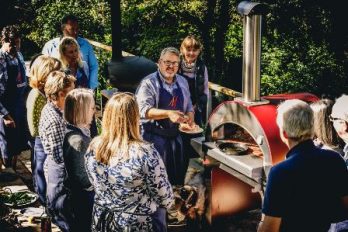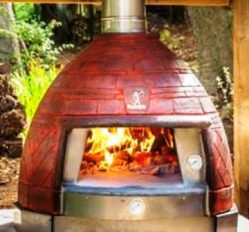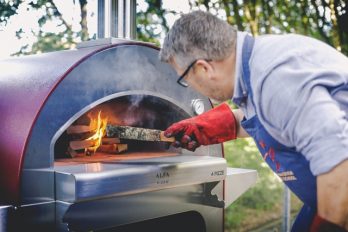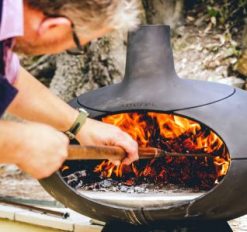Comparing Three Different Kinds of Woodfired Ovens
Join David in our Woodfired Workshop where he’ll talk you through some of the different kinds of ovens available and how they work. It’s one of the most common questions we get asked here at the woodfired cooking school and, much like with many things, there’s not one straight answer!
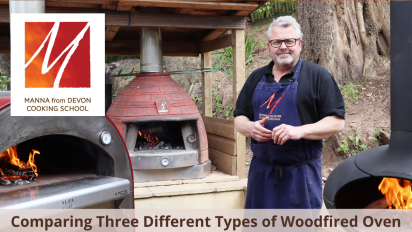
Things to think of when you’re investing in a woodfired oven include –
- your budget – from cheap and cheerful to reassuringly expensive, there’s an oven for every pocket
- what kind of cooking you’re likely to do – short, sharp and hot or long, slow and lingering; it’s all about the insulation
- the aesthetics of the oven and the look you like – traditional or contemporary, what’s your style?
- the access to where you want the oven to be – we’ve heard so many stories of ovens left at kerbside and new owners having to call the local rugby team to lift and shift with endless promises of pizza once the oven’s fired up
- are you likely to move house and want to take the oven with you – although it will certainly be a selling point if you need to leave it behind
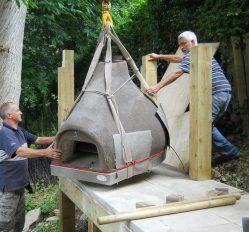
How’s your oven going to get to where you want it??!
Traditional Ovens
These are the ovens you think of when you think of a traditional woodfired oven – heavy, sturdy ovens that are difficult to move once in situ. As long as they are well insulated, they will cook for hours witht he refractory material holding on to lots of heat. You can do all manner of cooking in them from high heat cooking to long slow braises, stocks and stews.
Metal Ovens
These have a much more contemporary feel to them but still some refractory material on the floor with some insulation so you can cook for a good 2-3 hours with a healthy bed of embers. In a colour to suit everyone from hot red and sunshine yellow to stylish bronze and cool charcoal. Lighter so easier to move around and many can come with a stand on wheels.
Cast Iron
The cast iron oven is really just the Morso forno; we haven’t seen any others like it so do let us know if they are out there. A space heater as well as a stove, they have no thermal mass or insulation so won’t keep cooking for a long period without some help from you. Very stylish and the Henry Ford school of colour – anything as long as it’s black!
Other things to remember
Site your oven out of the way of any prevailing winds or regular windy weather
Also site it out of the way of your neighbours, or tell them when you’re firing up – especially if they have their windows open or their washing on the line, as your oven may well smoke before it’s up to temperature
Don’t put your oven too far from the kitchen as you’ll spend a lot of time walking back to get that one thing you’ve forgotten; so annoying!
If possible keep your oven under cover to protect it and, as importantly, you from the weather
Use small pieces of super dry wood for your fire for best fire management
Practise, practise, practise!!
If you want to learn more in person, join us at the cooking school for a class – a great day with like minded folk and you’ll learn loads! 